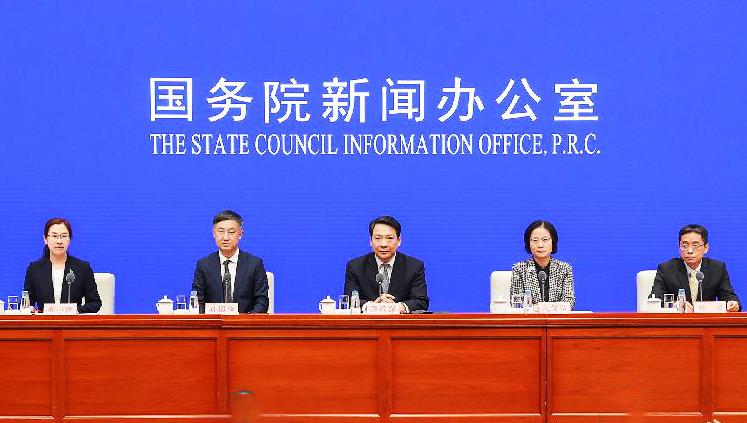National Medical Products Administration notified 53 batches of unqualified cosmetics, such as French Lanzi.
CCTV News:According to the website of National Medical Products Administration, 53 batches of cosmetics marked as agents (production) by 22 enterprises such as Special Eye International Trade (Shanghai) Co., Ltd. were unqualified after inspection by Zhejiang Food and Drug Inspection and Research Institute, and the above-mentioned unqualified products and related enterprises violated the Regulations on Hygienic Supervision of Cosmetics, Regulations on the Management of Cosmetic Labeling and other relevant laws and regulations.
According to National Medical Products Administration, the labeling agency (production) enterprises involved and the unqualified products are: Flower-jealous Mild Hair Cream 5N Natural Brown Set (Flower-jealous Mild Hair Cream 5N Natural Brown+Coenzyme Brilliant Hair Essence), Kaiweisi Hair Cream (chestnut color) (5.3 chestnut) and Kaiweisi Hair Cream (chestnut brown) produced by Guangzhou Kaiweisi Cosmetics Co., Ltd., Kaiweisi hair cream (chestnut color) and Kaiweisi hair cream, Caiyu zhanghua hair care baking oil (No.8) produced by Zhejiang zhanghua Health Care & Hairdressing Industry Co., Ltd., zhanghua hair care baking oil (No.14), Yeguozhen Tianfeng hair care baking oil (natural black), zhanghua hair care shampoo natural black, zhanghua brand Jiecai baking oil hair cream (No.30). Anzhi acid nourishing long-lasting color-dyeing baking ointment (wine red) produced by Beijing Guijiamei Industry and Trade Co., Ltd. (entrusting party: Beijing Yuqiri Tonghua Cosmetics Co., Ltd.), bright natural black hair cream produced by Jiangsu Meiaisi Cosmetics Co., Ltd. (entrusting party: Henkel Co., Ltd.), and CHEAM produced by Wujiang Xing Tsukagoshi Hirotaka Daily Chemicals Co., Ltd. Liangyan hair cream (36) and Liangyan hair cream (30)(12/11), Feiling hair cream 6-45 (medium wine red) produced by Shanghai Huimei Cosmetics Co., Ltd. and Sibert Jiaoyang hair cream, and Chuanglu baking oil hair cream 2N natural black produced by Zhuji Best Daily Chemical Co., Ltd.,Black Diamond Premium Black Hair Cream produced by Guangzhou Jiatong Cosmetics Co., Ltd., Jinghongda Hair Cream (Brown) and Jinghongda Hair Cream produced by Guangzhou Jinghongda Fine Chemical Co., Ltd., Siyu Hair Cream produced by Guangzhou Clivia Fine Chemical Co., Ltd. (Rose Purple), Hongrui Kaixian Hair Cream produced by Guangzhou Kaixi Cosmetics Co., Ltd., Haiweisi hair dressing ointment produced by Guangzhou Lanzi Cosmetics Co., Ltd. (entrusting party: France Lanzi (International) Cosmetics Co., Ltd.), Farafak Aromatherapy Bright Dyeing Ointment (Yingpaier Dyeing Ointment) produced by Guangzhou Yingpaier Cosmetics Co., Ltd., Jinhuang Female Hair Dyeing Ointment produced by Guangzhou Zhongyue Dasheng Cosmetics Co., Ltd., Jinzhutang Hair Dyeing Ointment and Jinzhutang Hair Dyeing Ointment produced by Guangzhou Weiniya Cosmetics Co., Ltd. Hair cream five-color rice plant essence hair cream (chestnut color), A Pai Yizu Mengpeisi hair cream (black) and Mengpeisi hair cream (0/45) produced by Heshan Bangli Fine Chemical Co., Ltd., Ai’s hair cream series (copper red) and Ai’s hair cream series (gold copper color) produced by Taishan Gaofu Daily Chemical Co., Ltd., and military doctor? Tiggo dyes hair cream quickly (wine red), military doctor? Tiggo dye fast hair cream (natural black), Tiggo wash black shampoo (black), Tiggo dye fast hair cream (natural black), Tiggo dye fast hair cream (natural black), Tiggo dye fast hair cream.(wine red) and Tiggo Dye Fast Hair Cream (brown), Dicai Hair Cream (brown) produced by Zhaoqing Dicai Daily Chemical Technology Co., Ltd. (entrusting party: Guangzhou Dicai Cosmetics Co., Ltd.), Capgemini Hair Cream (golden brown) 6/77 and Capgemini Hair Cream (natural black) 44/0 produced by Zhaoqing Capgemini Technology Co., Ltd.
Among them, after on-site verification by the drug supervision department where the manufacturer is located, it was marked as Caiyu zhanghua Dyeing and Baking Oil (No.8), zhanghua Dyeing and Baking Oil (No.14), Yeguozhen Tianfeng Dyeing and Baking Oil (Natural Black), zhanghua Dyeing and Protecting Shampoo Natural Black and zhanghua Jiecai Baking Oil Dyeing Cream (No.30) produced by Zhejiang zhanghua Health and Hairdressing Industry Co., Ltd.
The above-mentioned unqualified products and related enterprises violated the provisions of relevant laws and regulations such as the Regulations on Cosmetic Hygiene Supervision, the Regulations on the Administration of Cosmetic Labeling and so on. National Medical Products Administration asked the drug regulatory authorities in Beijing, Guangdong, Shanghai, Henan, Jiangsu and Zhejiang provinces (cities) to supervise and urge relevant production enterprises to take timely measures such as recalling related products that have been listed and sold, file an investigation and deal with them seriously according to law; The drug regulatory authorities in Anhui, Fujian, Gansu, Guangdong, Guizhou, Hainan, Hebei, Hubei, Hunan, Jiangsu, Liaoning, Inner Mongolia, Ningxia, Shandong, Shanxi, Shaanxi, Sichuan, Tianjin, Yunnan and Zhejiang provinces (cities) are required to order relevant business units to immediately take measures such as taking off the shelves to control risks. For products suspected of counterfeiting, it is necessary to thoroughly investigate their purchase channels and investigate violations of laws and regulations. The above-mentioned provincial drug regulatory authorities shall disclose the processing results of relevant enterprises or units within 3 months from the date of announcement, and timely fill in and report the relevant information in the national cosmetic sampling information system in National Medical Products Administration.










